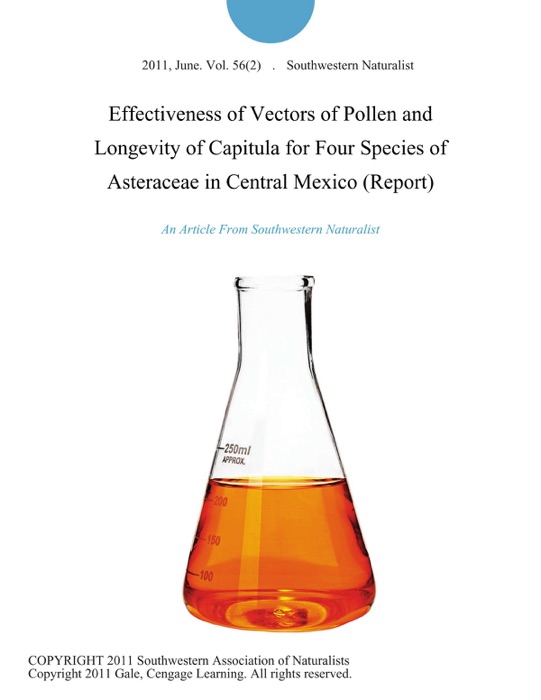(DOWNLOAD) "Effectiveness of Vectors of Pollen and Longevity of Capitula for Four Species of Asteraceae in Central Mexico (Report)" by Southwestern Naturalist * Book PDF Kindle ePub Free

eBook details
- Title: Effectiveness of Vectors of Pollen and Longevity of Capitula for Four Species of Asteraceae in Central Mexico (Report)
- Author : Southwestern Naturalist
- Release Date : January 01, 2011
- Genre: Life Sciences,Books,Science & Nature,
- Pages : * pages
- Size : 215 KB
Description
Breeding systems of plants are highly variable. For example, plants within the family Asteraceae predominantly are self-incompatible; however, the family contains both outcrossing and selfing species (e.g., Lawrence, 1985; Lane, 1996; Nielsen et al., 2003; Heenan et al., 2005; Ortiz et al., 2006). self-incompatible, outcrossing species within Asteraceae are pollinated by a diversity of vectors of pollen, including insects and wind (e.g., Grashoff and Beaman, 1970; Sullivan, 1975; Schmitt, 1980, 1983; Berry and calvo, 1989; Lane, 1996). conversely, self-compatible species may experience outcrossing via pollinators as well as spontaneous and pollinator-assisted self-fertilization (Grashoff and Beaman, 1970; Faegri and van der Pijl, 1971; Meeuse, 1978; stelleman, 1978). Although Asteraceae is among the largest families of plants, there is a lack of information on breeding systems of species and on effectiveness of different vectors of pollen on reproductive success. Reproductive success is determined by availability of vectors of pollen, degree of self-compatibility, or both. in addition, other factors including life span of flowers and environmental conditions are crucial for reproductive success. Longevity of flowers, as well as longevity of buds and fruits, may have a strong influence on reproductive success because greater longevity increases potential exposure to adverse factors that may prevent maturation of fruits and seeds (i.e., risks of predation, unfavorable weather conditions, and asynchrony between maturation of seeds and dispersers of seeds; primack, 1987). some factors affecting longevity of mature flowers might also determine duration of other stages (i.e., buds and fruits); thus, influencing availability of flowers to pollinators and having direct consequences on reproductive success. Longevity of flowers has been studied in many families of plants. However, little attention has been paid to factors affecting longevity of other developmental stages, such as buds or fruits (Primack, 1987). Moreover, there is a lack of studies on longevity of capitula and its relationship to reproductive success.